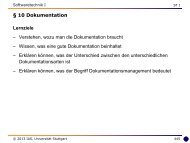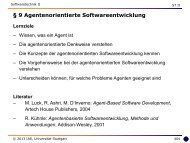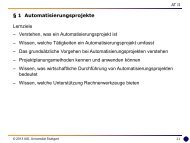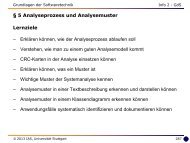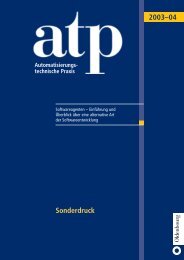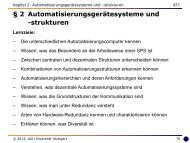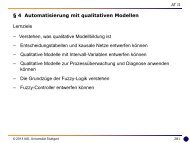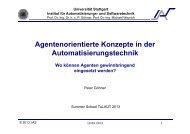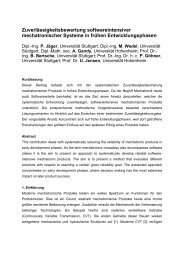Grundlagen FlexRay - Institut für Automatisierungs- und ...
Grundlagen FlexRay - Institut für Automatisierungs- und ...
Grundlagen FlexRay - Institut für Automatisierungs- und ...
You also want an ePaper? Increase the reach of your titles
YUMPU automatically turns print PDFs into web optimized ePapers that Google loves.
<strong>Gr<strong>und</strong>lagen</strong> <strong>FlexRay</strong> BasicsV 1.1 23<br />
Figure 2.18 Example of a wakeup<br />
After completing the Wakeup Phase, the Coldstart Nodes try to establish a communication on<br />
the bus,<br />
2.7 Startup<br />
While starting up a <strong>FlexRay</strong> network, all timers of the ECUs are synchronized. The difficulty<br />
consists of synchronizing nodes with the communication, while not disrupting nodes which<br />
are already synchronized. This is examined in-depth in section 2.8.<br />
There are several scenarios which can occur during the Startup of a <strong>FlexRay</strong> network. It has to<br />
be considered that only Coldstart Nodes are allowed to send Startup Frames. Also, the ECUs<br />
have to be in POC:ready state, before they can participate in the Startup of the cluster.<br />
1. Scenario – no Coldstart Node in the cluster<br />
This scenario occurs, if no Coldstart Node has been defined in the cluster, or if these<br />
nodes aren’t in POC:ready state.<br />
In practical use, this situation often occurs while testing a single ECU. For starting the<br />
communication in that case, the software has to simulate the Coldstart Nodes.<br />
Bäurle 12.10.2012




